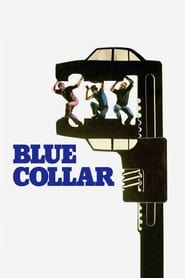[L]iveliness [and] tonal variety is shrewdly utilized by Schrader as a form of misdirection. Blue Collar is driven by a tragic thesis, and it’s as bleak and furious as any film Schrader has made since, but it takes its time and allows you to get your guard down. […] In most heist movies, criminals fall out over the ill-gotten booty. In Blue Collar, Zeke, Jerry, and Smokey are driven apart because they are expertly manipulated by larger social forces.
[…]
The archive audio commentary […] is a detailed and fascinating listen, especially for Schrader’s descriptions of working with his famously contentious leading men. Richard Pryor, Yaphet Kotto, and Harvey Keitel all worked differently and all resented one another, and Schrader felt that he had no control and was merely trying to “survive” the production. […] Pryor would come into a scene hot from the first take and would soon flame out, while Keitel needed to warm up, so Schrader was often shooting Pryor’s first take and Keitel’s, say, 10th, which was achieved by having Keitel rehearse separately. Pryor had racial resentments, and would provoke his co-stars, possibly to stimulate himself artistically, while every actor suspected the other to be the true star of the production. These conditions informed the formal qualities of Blue Collar as well, as the camera rarely moves, mostly because Schrader had trouble getting coverage. (Austere camera movements would soon become a signature of his aesthetic.)
— Chuck Bowen (Slant)

